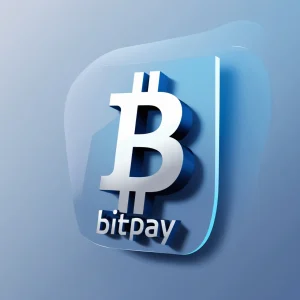In the rapidly evolving landscape of digital finance, cryptocurrencies have emerged as a transformative tool for businesses seeking efficient, secure, and cost-effective payment solutions. Among these, Tether (USDT), a stablecoin pegged to the U.S. dollar, has gained prominence due to its stability and widespread adoption. As businesses increasingly integrate cryptocurrency payments into their operations, understanding how to issue refunds via Tether payments is crucial for maintaining customer satisfaction and operational efficiency. This comprehensive guide explores the process of issuing Tether refunds, leveraging platforms like CoinGate and BitPay, and provides best practices to ensure a seamless experience.
What is Tether (USDT)?
Tether (USDT) is a stablecoin launched in 2014 by Tether Limited, designed to maintain a 1:1 peg with the U.S. dollar. Unlike volatile cryptocurrencies like Bitcoin or Ethereum, Tether’s value remains stable, making it an ideal medium for transactions, including refunds. Each USDT token is backed by reserves held by Tether Limited, which include U.S. dollars and other assets, ensuring its stability. As of March 2024, Tether is the third-largest cryptocurrency by market capitalization, with nearly $99 billion, and holds a 70% market share among stablecoins.
Tether operates on multiple blockchain networks, including Bitcoin, Ethereum, and Tron, enhancing its accessibility. Its stability, low transaction fees, and fast processing times make it a preferred choice for businesses handling international transactions. However, Tether has faced criticism regarding the transparency of its reserves, with some questioning whether its backing is fully verifiable. Despite this, its widespread use and reliability make it a practical option for refund processing.
Also Read : Top Stablecoins for B2B Payments Gateway in 2025
Why Use Tether for Refunds?
Issuing refunds is a critical component of customer service, and Tether offers several advantages over traditional refund methods:
- Stability: Tether’s peg to the U.S. dollar ensures that refund amounts remain consistent, avoiding losses due to cryptocurrency market volatility.
- Speed: Tether transactions are processed quickly, often within minutes, compared to days for traditional bank transfers, especially for cross-border payments.
- Cost-Effectiveness: Tether transactions typically incur lower fees than traditional banking systems, particularly for international refunds, making it economical for businesses.
- Global Reach: Tether is accepted worldwide, allowing businesses to issue refunds to customers in any region without currency conversion hassles.
- Transparency: Blockchain technology records all Tether transactions on a public ledger, reducing the risk of fraud and enhancing trust.
These benefits make Tether an attractive option for businesses aiming to streamline their refund processes while enhancing customer experience.
How to Issue Refunds via Tether Payments
Issuing refunds via Tether requires a reliable cryptocurrency payment processor. Below, we detail the process using CoinGate, a leading platform that supports Tether and offers a robust refund system. We also touch on BitPay, another popular processor, though its specific steps may differ.
Using CoinGate for Tether Refunds
CoinGate provides a user-friendly system for issuing refunds in Tether, simplifying the process for merchants. Here’s a step-by-step guide based on CoinGate’s refund feature:
- Set Up a CoinGate Merchant Account:
- Register for a CoinGate merchant account at CoinGate. Verify your account to access all features, including refund processing.
- Ensure you have USDT or EURT (Euro-pegged stablecoin) in your balance to avoid conversion fees and price fluctuations.
- Navigate to the Merchant Dashboard:
- Log into your CoinGate account and go to the Merchant > Orders tab to view all customer orders.
- Select the Order:
- Identify the order requiring a refund and click on it to access its details.
- Complete the Refund Form:
- Click the Refund option to open the refund form. Provide the following details:
- Balance: Choose USDT from your account balance to cover the refund.
- Refund Amount: Enter the amount in the original pricing currency (e.g., EUR or USD). CoinGate converts this to USDT at the current exchange rate.
- Email: Input the customer’s email for notifications.
- Refund Currency: Select USDT.
- Currency Network: Choose the blockchain network (e.g., Ethereum, Tron) matching the customer’s wallet to ensure compatibility.
- Address: Enter the customer’s USDT wallet address.
- Reason: Specify the reason for the refund (optional).
- Click the Refund option to open the refund form. Provide the following details:
- Submit and Track:
- Review all details, especially the wallet address, to prevent errors. Submit the refund request.
- CoinGate processes the refund, deducting the amount from your balance. The status will appear as “Pending” until the customer confirms receipt via email.
- Monitor the refund status in the Merchant > Refunds menu.
- Notify the Customer:
- Both you and the customer receive email notifications upon refund completion, ensuring transparency.
Example Calculation
If a customer paid €10 for a service and requests a refund, and the EUR/USDT exchange rate is 1:1, the customer receives 10 USDT. Note that exchange rate fluctuations may affect the final amount if the refund is processed later .
Fees
CoinGate charges a Refund Issuance Fee and a Conversion Fee if the refund currency differs from your balance. Check current fees at CoinGate Pricing.
Using BitPay for Tether Refunds
BitPay also supports Tether payments and refunds. While specific steps are less detailed in available sources, the general process involves:
- Log into your BitPay merchant account and access the Payments view.
- Select the fully paid invoice to refund.
- Choose Full Refund or Partial Refund, specifying the amount in the original currency or cryptocurrency paid.
- Provide the customer’s email or wallet address for the refund.
- Submit the request, and BitPay sends a refund link to the customer, who must claim it within three days .
BitPay charges a miner fee for refunds, which can be borne by the merchant or customer, depending on your policy .
Comparison of CoinGate and BitPay
| Feature | CoinGate | BitPay |
|---|---|---|
| Refund Process | Form-based via dashboard | Email-based refund link |
| Supported Blockchains | Ethereum, Tron, others | Ethereum, others |
| Fees | Refund Issuance + Conversion Fee | Miner Fee (merchant or customer) |
| Processing Time | Near-instant upon submission | 1-2 business days |
| Customer Confirmation | Email confirmation required | Email link, expires in 3 days |
Best Practices for Issuing Cryptocurrency Refunds
To ensure a smooth refund process with Tether, consider these best practices:
- Clear Communication: Publish a clear refund policy, specifying that refunds can be issued in Tether. Provide instructions for customers to share their wallet addresses.
- Verify Wallet Addresses: Always confirm the customer’s USDT wallet address to avoid sending funds to the wrong destination, as blockchain transactions are irreversible.
- Understand Fees: Be transparent about transaction fees, such as CoinGate’s Refund Issuance Fee or BitPay’s miner fee, and decide whether your business or the customer will cover them.
- Use Stablecoins: Prefer USDT or EURT for refunds to avoid price volatility, ensuring the refund amount matches the original payment value.
- Track Transactions: Use blockchain explorers to verify refund transactions, ensuring they are processed correctly.
- Train Staff: Educate your team on cryptocurrency refund processes to minimize errors and improve efficiency.
Legal and Regulatory Considerations
Cryptocurrency transactions, including Tether refunds, are subject to varying regulations by jurisdiction. Key considerations include:
- KYC/AML Compliance: Some regions require Know Your Customer (KYC) and Anti-Money Laundering (AML) checks for cryptocurrency transactions. Ensure your business complies with these requirements.
- Tax Implications: Refunds in Tether may have tax consequences for both businesses and customers. Consult a tax professional to understand local laws.
- Consumer Protection: Adhere to consumer protection laws, which may mandate specific refund policies or timelines for cryptocurrency transactions.
Given Tether’s past controversies regarding reserve transparency, businesses should stay informed about regulatory developments to mitigate risks .
Also Read : Tether Payment Gateway with KYC Compliance
Conclusion
Issuing refunds via Tether payments offers businesses a stable, efficient, and cost-effective solution in the digital economy. Platforms like CoinGate and BitPay simplify the process, enabling merchants to process refunds quickly while maintaining customer trust. By following best practices, such as verifying wallet addresses and understanding fees, businesses can streamline their refund operations. Additionally, staying compliant with local regulations ensures a secure and lawful process. As cryptocurrency adoption grows, leveraging Tether for refunds can position your business as innovative and customer-centric, enhancing your competitive edge in a global market.







